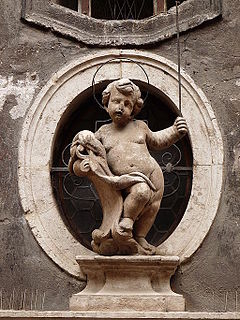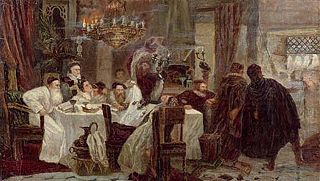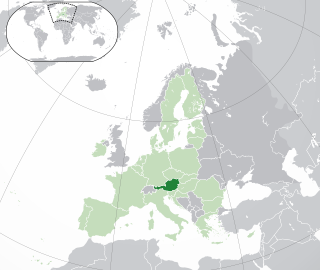Related Research Articles

Blood libel or ritual murder libel is an antisemitic canard which falsely accuses Jews of murdering Christian children in order to use their blood as part of religious rituals. Historically, these claims—alongside those of well poisoning and host desecration—have been a major theme of the persecution of Jews in Europe.

The Third Crusade (1189–1192) was an attempt by the leaders of the three most powerful states of Western Christianity to reconquer the Holy Land following the capture of Jerusalem by the Ayyubid sultan Saladin in 1187. It was partially successful, recapturing the important cities of Acre and Jaffa, and reversing most of Saladin's conquests, but it failed to recapture Jerusalem, which was the major aim of the Crusade and its religious focus.

Marranos were Spanish and Portuguese Jews living in the Iberian Peninsula who converted or were forced to convert to Christianity during the Middle Ages, yet continued to practice Judaism in secret.
The history of antisemitism, defined as hostile actions or discrimination against Jews as a religious or ethnic group, goes back many centuries, with antisemitism being called "the longest hatred". Jerome Chanes identifies six stages in the historical development of antisemitism:
- Pre-Christian anti-Judaism in Ancient Greece and Rome which was primarily ethnic in nature
- Christian antisemitism in antiquity and the Middle Ages which was religious in nature and has extended into modern times
- Muslim antisemitism which was—at least in its classical form—nuanced, in that Jews were a protected class
- Political, social and economic antisemitism during the Enlightenment and post-Enlightenment Europe which laid the groundwork for racial antisemitism
- Racial antisemitism that arose in the 19th century and culminated in Nazism
- Contemporary antisemitism which has been labeled by some as the new antisemitism
Yellow badges, also referred to as Jewish badges, are badges that Jews were ordered to wear in public during periods of the Middle Ages by the ruling Christians and Muslims, and in Nazi Germany. The badges served to mark the wearer as a religious or ethnic outsider, and often served as a badge of shame.
Religious antisemitism is aversion to or discrimination against Jews as a whole based on religious beliefs, false claims against Judaism and religious antisemitic canards. It is sometimes called theological antisemitism.
Schutzjude was a status for German Jews granted by the imperial, princely or royal courts.

The history of the Jews in England goes back to the reign of William the Conqueror. Although it is likely that there had been some Jewish presence in the Roman period, there is no definitive evidence, and no reason to suppose that there was any community during Anglo-Saxon times. The first written record of Jewish settlement in England dates from 1070. The Jewish settlement continued until King Edward I's Edict of Expulsion in 1290. After the expulsion, there was no overt Jewish community until the rule of Oliver Cromwell. While Cromwell never officially readmitted Jews to the Commonwealth of England, a small colony of Sephardic Jews living in London was identified in 1656 and allowed to remain.
In the early modern period, a court Jew, or court factor, was a Jewish banker who handled the finances of, or lent money to, European, mainly German, royalty and nobility. In return for their services, court Jews gained social privileges, including in some cases being granted noble status. Court Jews were needed because prohibitions against usury applied to Christians but did not apply to Jews.
Persecution of Jews has been a major part of Jewish history, prompting shifting waves of refugees throughout the diaspora communities.
History of European Jews in the Middle Ages covers Jewish history in the period from the 5th to the 15th century. During the course of this period, the Jewish population gradually shifted from their homeland in the Levant to Europe, primarily Central Europe dominated by the Holy Roman Empire or Southern Europe dominated by the Iberian kingdoms.

The history of the Jews in Germany goes back to the Early Middle Ages and High Middle Ages when Jewish settlers founded the Ashkenazi Jewish community. The community survived under Charlemagne, but suffered during the Crusades. Accusations of well poisoning during the Black Death (1346–53) led to mass slaughter of German Jews and they fled in large numbers to Poland. The Jewish communities of the cities of Mainz, Speyer and Worms became the center of Jewish life during medieval times. "This was a golden age as area bishops protected the Jews resulting in increased trade and prosperity."

The Rhineland massacres, also known as the persecutions of 1096 or Gzerot Tatnó, were a series of mass murders of Jews perpetrated by mobs of German Christians of the People's Crusade in the year 1096, or 4856 according to the Jewish calendar. The massacre is seen as the first in a sequence of antisemitic events in Europe which culminated in the Holocaust.

The Jewish hat also known as the Jewish cap, Judenhut (German) or Latin pileus cornutus, was a cone-shaped pointed hat, often white or yellow, worn by Jews in Medieval Europe and some of the Islamic world. Initially worn by choice, its wearing was enforced in some places in Europe after the 1215 Fourth Council of the Lateran for adult male Jews to wear while outside a ghetto to distinguish them from others. Like the Phrygian cap that it often resembles, the hat originated in pre-Islamic Persia, as a similar hat was worn by Babylonian Jews.

The history of the Jews in Austria probably begins with the exodus of Jews from Judea under Roman occupation. Over the course of many centuries, the political status of the community rose and fell many times: during certain periods, the Jewish community prospered and enjoyed political equality, and during other periods it suffered pogroms, deportations to concentration camps and mass murder, and antisemitism. The Holocaust drastically reduced the Jewish community in Austria and only 8,140 Jews remained in Austria according to the 2001 census, but other estimates place the current figure at 9,000, 15,000 and 20,000 people, if accounting for those of mixed descent.

The history of Christian thought has included concepts of both inclusivity and exclusivity from its beginnings, that have been understood and applied differently in different ages, and have led to practices of both persecution and toleration. Early Christian thought established Christian identity, defined heresy, separated itself from polytheism and Judaism and invented supersessionism. In the centuries after Christianity became the official religion of Rome, some scholars say Christianity became a persecuting religion, while others say the change to Christian leadership did not cause any substantive persecution of pagans.

The fiscus Iudaicus or fiscus Judaicus was a tax imposed on Jews in the Roman Empire after the destruction of Jerusalem and its Temple in AD 70. Revenues were directed to the Temple of Jupiter Optimus Maximus in Rome.

The Frankfurter Judengasse was the Jewish ghetto of Frankfurt and one of the earliest ghettos in Germany. It existed from 1462 until 1811 and was home to Germany's largest Jewish community in early modern times.
The Disputation of Barcelona was a formal ordered medieval debate between representatives of Christianity and Judaism regarding whether or not Jesus was the Messiah. It was held at the royal palace of King James I of Aragon in the presence of the King, his court, and many prominent ecclesiastical dignitaries and knights, between Dominican Friar Pablo Christiani, a convert from Judaism to Christianity, and Nachmanides, a leading medieval Jewish scholar, philosopher, physician, kabbalist, and biblical commentator.
Antisemitism in the history of the Jews in the Middle Ages became increasingly prevalent in the Late Middle Ages. Early instances of pogroms against Jews are recorded in the context of the First Crusade. Expulsion of Jews from cities and instances of blood libel become increasingly common in the 13th to 15th centuries. This trend peaked only after the end of the medieval period, and subsided only with Jewish emancipation in the late 18th to 19th century.
References
- ↑ Abulafia, Anna Sapir (2011). Christian-Jewish Relations, 1000-1300. Great Britain: Pearson Education. pp. 52–54. ISBN 978-0-582-82296-2.
- Roth, Cecil (1997). "Antisemitism". Encyclopedia Judaica (CD-ROM Edition Version 1.0). Ed. Cecil Roth. Keter Publishing House. ISBN 965-07-0665-8
| | This article related to Jewish history is a stub. You can help Wikipedia by expanding it. |